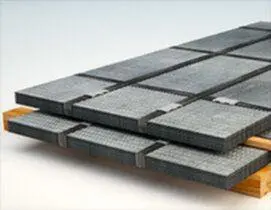4 Materials Most Often Used in Housing Construction
When constructing a home, the materials chosen can significantly impact its aesthetics, durability, and comfort. Today’s construction landscape offers a variety of building materials that cater to different climates, budgets, and personal preferences. Read on and learn about four materials often used in housing construction.
Wood
Wood is a time-honored home construction classic, favored for its natural beauty and inherent warmth. This versatile material is sustainable when sourced responsibly and boasts excellent thermal properties, contributing to a home’s energy efficiency. Wood’s adaptability allows for various architectural styles, from traditional log cabins to contemporary designs. Moreover, the material’s relative ease of handling and modification makes it a favorite among builders and DIY enthusiasts.
Brick
The brick has earned its reputation for resilience and longevity. Often celebrated for its low maintenance, brick construction provides a solid defense against fire and weather extremes. The thermal mass of bricks contributes to energy conservation, helping to maintain a consistent indoor temperature throughout the year. Aesthetically, brick offers a timeless appeal and works with various styles, from classic to modern.
Concrete
Concrete’s strength and durability make it a staple for foundations and load-bearing structures. It has also become a preferred material for walls and even decorative elements within the home. Concrete has a high resistance to fire, pests, and rot, as well as excellent sound insulation properties. When it comes to modern construction, concrete provides a blank canvas for architects, as they can mold it into virtually any shape or design.
Steel
 The use of steel in residential construction has seen a rise, particularly in areas prone to severe weather or where termites pose a risk to timber structures. Construction sites often use steel plates due to their robustness and resistance to shrinkage, warping, and deterioration over time. It’s also a boon for creating homes with larger open spaces and minimal need for support walls. Steel is fully recyclable, adding a green aspect to its advantages.
The use of steel in residential construction has seen a rise, particularly in areas prone to severe weather or where termites pose a risk to timber structures. Construction sites often use steel plates due to their robustness and resistance to shrinkage, warping, and deterioration over time. It’s also a boon for creating homes with larger open spaces and minimal need for support walls. Steel is fully recyclable, adding a green aspect to its advantages.
Now that you know the four materials most often used in housing construction, you can appreciate the diversity and particular advantages each brings to the table. Whether it’s the traditional warmth of wood, the enduring nature of brick, the versatile strength of concrete, or the modern resilience of steel, these materials form the backbone of today’s construction methods and innovations.



6 Comments
Terri Quick
Thank you for sharing
Tamra Phelps
These basic 4 I feel safe with. It’s when they start adding stuff like asbestos, etc., that things go bad.
gloria patterson
The only thing missing from your list is STONE. My brother & sister in law started building their home in the country 40+ yrs ago. After talking to people they decided they needed to BUILT the whole house and live in the basement. Slowly they have worked, paid as they went. Steel beams, concrete basement, wood on the upstairs floors, & stairs. And a massive stone fireplace in the basement to the ceiling
The uperstairs has been finished for years but just now getting the outside finished. The outside is wood and stone and they just finished the front porch. Big porch wood, stone, concrete…. BEAUTIFUL
heather
This was an interesting post to read. I really like the look of brickwork in housing construction.
MICHAEL A LAW
Very interesting. Thanks for sharing.
Anonymous
Thanks for sharing. Great info!